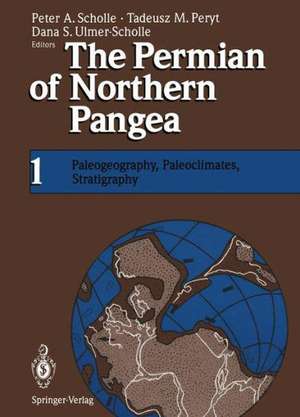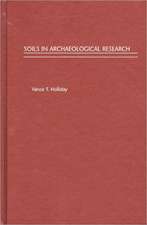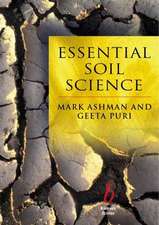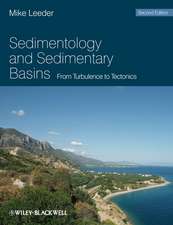The Permian of Northern Pangea: Volume 1: Paleogeography, Paleoclimates, Stratigraphy
Editat de Peter A. Scholle, Tadeusz M. Peryt, Dana S. Ulmer-Scholleen Limba Engleză Paperback – 10 ian 2012
| Toate formatele și edițiile | Preț | Express |
|---|---|---|
| Paperback (2) | 571.27 lei 39-44 zile | |
| Springer Berlin, Heidelberg – 10 ian 2012 | 571.27 lei 39-44 zile | |
| Springer Berlin, Heidelberg – 21 dec 2011 | 576.85 lei 39-44 zile |
Preț: 571.27 lei
Preț vechi: 714.09 lei
-20% Nou
Puncte Express: 857
Preț estimativ în valută:
109.31€ • 113.91$ • 90.51£
109.31€ • 113.91$ • 90.51£
Carte tipărită la comandă
Livrare economică 31 martie-05 aprilie
Preluare comenzi: 021 569.72.76
Specificații
ISBN-13: 9783642785955
ISBN-10: 3642785956
Pagini: 272
Ilustrații: VII, 261 p. 32 illus., 2 illus. in color.
Dimensiuni: 193 x 270 x 14 mm
Greutate: 0.59 kg
Ediția:Softcover reprint of the original 1st ed. 1995
Editura: Springer Berlin, Heidelberg
Colecția Springer
Locul publicării:Berlin, Heidelberg, Germany
ISBN-10: 3642785956
Pagini: 272
Ilustrații: VII, 261 p. 32 illus., 2 illus. in color.
Dimensiuni: 193 x 270 x 14 mm
Greutate: 0.59 kg
Ediția:Softcover reprint of the original 1st ed. 1995
Editura: Springer Berlin, Heidelberg
Colecția Springer
Locul publicării:Berlin, Heidelberg, Germany
Public țintă
ResearchDescriere
The Permian was a remarkable time period. It represents the maximum stage of Pangean continental assembly, includes a major global climatic shift from glacial to nonglacial conditions (icehouse-greenhouse transition), and is ter minated by one of the most profound faunal/floral extinction events in the Earth's history. In addition, Permian oceans, although poorly understood, must have had some quite unique characteristics. Permian seas reached the most extreme values of carbon, sulfur, and strontium isotopic ratios ever achieved in Phanerozoic time, and the isotopic ratios of all three elements abruptly returned to more "normal" values at, or very close to, the Permo Triassic boundary. Finally, the Permian is marked by an abundance of important sedimentary mineral resources. It has large fossil fuel concentra tions (coal, oil, and natural gas), enormous phosphate reserves, and very extensive evaporite deposits, including gypsum, anhydrite, and halite, as well as a variety of potash salts. Study of the Permian has been hampered, however, by a number of factors. These include a scattered geologic literature (presented in a variety of languages), a confusing regional and global stratigraphic framework (based, in part, on inadequate type sections), and largely provincial, often poorly correlatable faunas. All have contributed to the sparsity and inadequacy of overviews of this critical geological interval. The two volumes attempts to bring together some of the widely scattered observations about these fascinating rocks, at least for the northern (pre dominantly nonglacial) parts of Pangea.
Cuprins
Overviews.- Pangea and the Paleogeography of the Permian.- The End-Permian Mass Extinction.- Paleoclimates.- The Climate of Pangea: A Review of Climate Model Simulations of the Permian.- Geologic Evidence of Permian Climate.- The Ending of the Late Paleozoic Ice Age During the Permian Period.- General Stratigraphic Tools.- A Numerical Time Scale for the Permian and Triassic Periods: An Integrative Time Analysis.- Permian Sequence Stratigraphy.- Variation in 87Sr/86Sr of Permian Seawater: An Overview.- Carbon and Sulfur Isotope Stratigraphy of the Permian and Adjacent Intervals.- Biostratigraphic Studies.- Permian Sponge Biogeography and Biostratigraphy.- Permian Fusulinaceans.- Permian Conodonts.- Permian Bryozoa.- Permian Ammonoids in the Arctic Regions of the World.- The Palynology of the Permian of Northern Continents: A Review.









